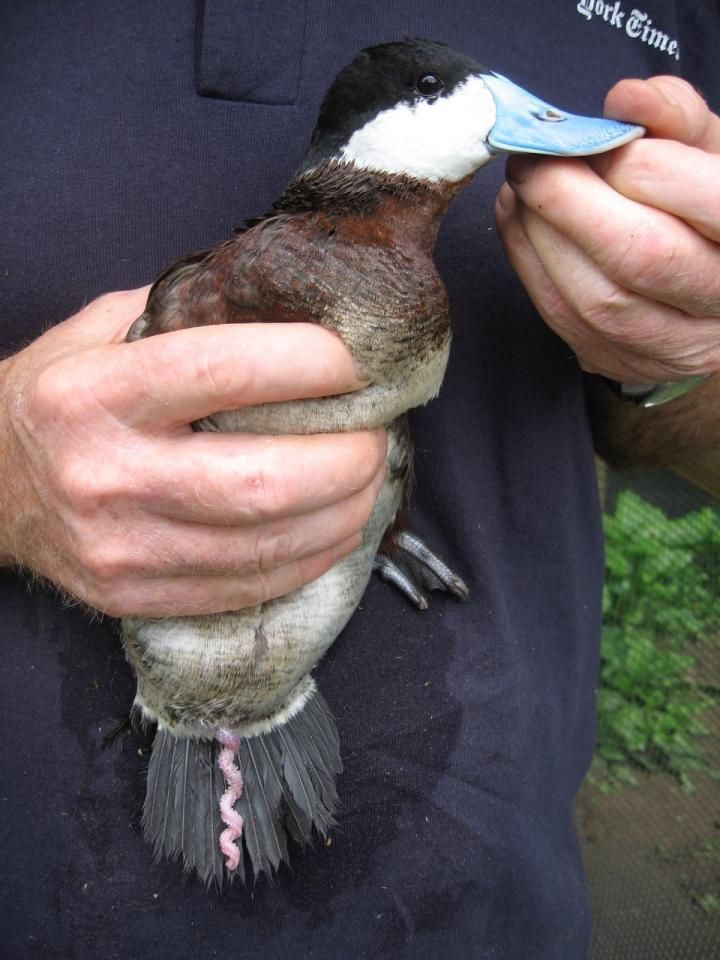Penis Enhancement Among Ducks Caused By Competition From Other Males

If you have browsed the internet enough, it is inevitable that you have seen advertisements for products or techniques that promise to enlarge your penis — irrespective of whether you have one or not — to make it look like something possibly not entirely human. Whether those advertisements are only scams is not known, but as it turns out, at least in the case of ducks, the most effective way to grow a bigger penis is to be in the company of other males.
Most bird species actually don’t have penises, or any genitalia at all, in fact. They use an organ called cloaca — an orifice that is the combined opening for the digestive, reproductive and urinary tracts, all in one. The males and females touch their cloacae together, transferring the sperm from the former to the latter. But some species of ducks and swans are notable exceptions to this rule, and have penises instead.
Male ducks, in particular, have distinct long and spiraling penises. And a study published Wednesday in the journal The Auk: Ornithological Advances — which is published by the American Ornithological Society — found that the size of ducks’ penises is influenced by the social environment the males spend time in.
Two duck species were observed in the study conducted by Patricia Brennan of Mount Holyoke College and her colleagues. The ducks were kept either in pairs or in groups during the breeding seasons over two years, and the changes in penis sizes recorded carefully.
Ruddy ducks (Oxyura jamaicensis) have relatively longer penises, compared to other waterfowl, and are known to be a highly promiscuous species, not forming pairing bonds at all. In the experiment, many males did not reach sexual maturity till the second year. Penises of smaller individuals housed in groups grew faster than those of ducks housed in pairs, but the growth among individuals in group housing was not in sync, and their reproductive condition lasted only for short periods of time.
This led the researchers to arrive at various conclusions.
One, male ruddy ducks that face competition from other males tend to grow their penises faster than those who were in a pair with a female. Two, individuals can delay their sexual maturing to minimize the cost of male-on-male aggression. Also, since this species already has relatively large penises, its ability to grow them even further based on social cues may be inherently limited.
The other species that was studied was lesser scaup (Aythya affinis), known to form seasonal pair bonds and with relatively smaller penises. As predicted by the researchers, males grew longer penises when housed in groups with other males. The fact that they form pairs likely has a role to play in the comparatively simple result, in contrast with the complexity exhibited by ruddy ducks.
Queen’s University’s Bob Montgomerie, an expert on reproductive strategies who was not involved in the study, said in a statement: “The question now is whether the observed increase in penis size in Lesser Scaup under the threat of sperm competition actually gives males a competitive advantage. Like all good studies, this one will undoubtedly stimulate more research, as it provides both methodologies and a clear focus on interesting questions.”
Either measuring duck penises must be easy, or Brennan and her colleagues are gifted, because the researchers found that part of the study easier than keeping the test subjects fed and housed.
“Keeping ducks in captivity is expensive. We were lucky to partner with the Livingstone Ripley Waterfowl Conservancy in Litchfield, Connecticut, where their expert personnel kept the ducks healthy and in beautiful, naturalistic enclosures year-round,” she said in the statement.
The paper is titled “Evidence of phenotypic plasticity of penis morphology and delayed reproductive maturation in response to male competition in waterfowl.”
The evolution of ducks’ reproductive parts has led to very unusual anatomy in these birds. While the males of some species have the aforementioned corkscrew-shaped penises — they can be as long as 20 centimeters (8 inches) and almost explode outward, into the females’s vagina, in a mere third of a second — with ridges and backward-pointing spines to penetrate deep into their mates, so that their sperm can be deposited as safely as possible.
On the other hand, the females have evolved intricate, long and twisting vaginas that are veritable labyrinths. This is to ensure that a male who tries to force himself onto a female (a pretty common occurrence) is thwarted in the attempt to inseminate, since the maze-like vagina has dead-end pockets and spirals going the wrong way and other such organic means to keep unwanted sperm away from the eggs.
© Copyright IBTimes 2025. All rights reserved.





















